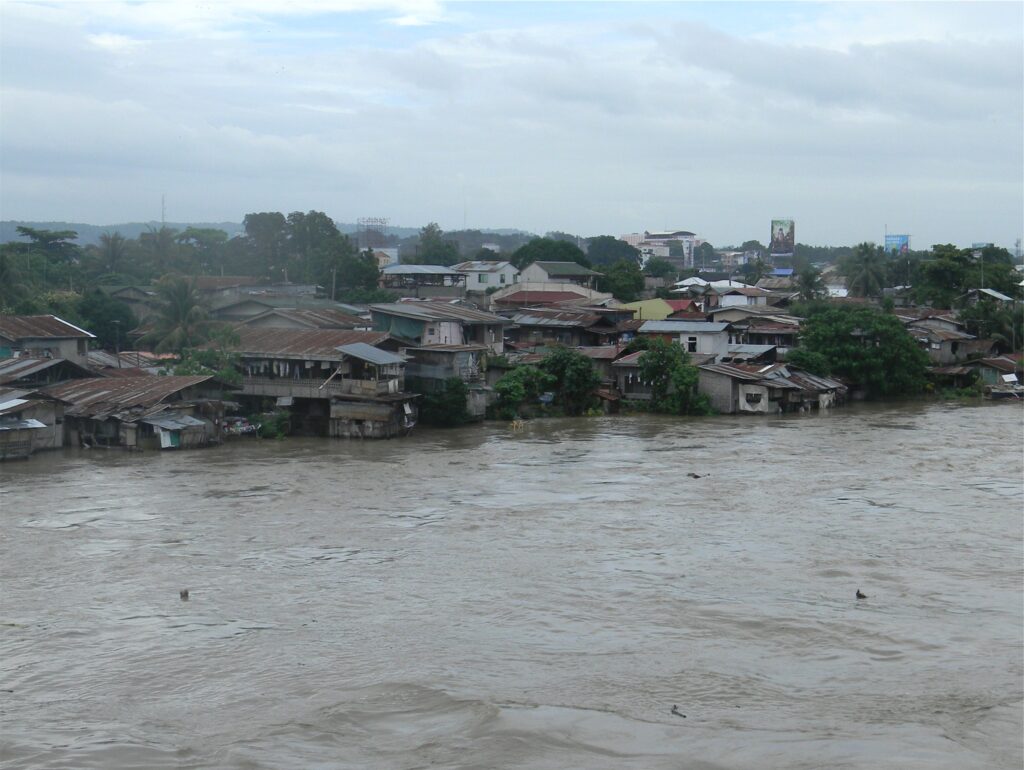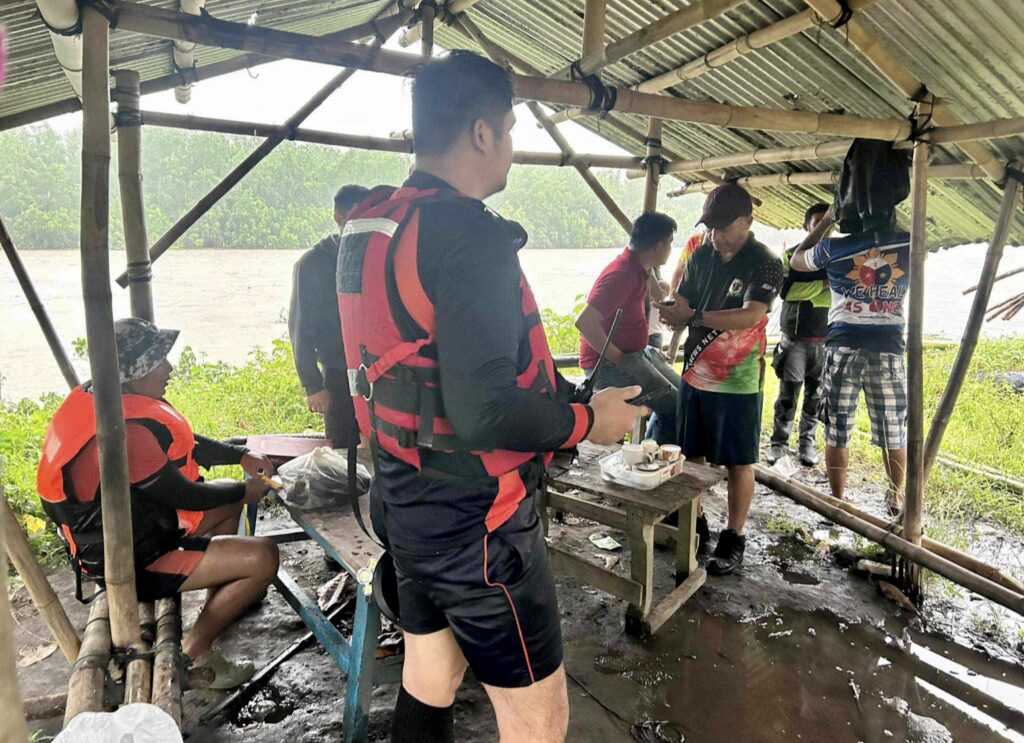by Henrylito D. Tacio

The popular TV show, “Three’s a Company,” comes to mind if you compare disasters happening in the country. When there’s a typhoon, you expect too much rain and inundating floods.
These days, even if there’s no typhoon, as long as there’s rain – causing too much water – then you expect flooding in Davao City.
The Flood Forecasting Branch of Philippine Atmospheric, Geophysical and Astronomical Services Administration (PAGASA) defines flood as “an abnormal progressive rise in the water level of a stream that may result in the overflowing by the water of the normal confines of the stream with the subsequent inundation of areas which are not normally submerged.”
But to us lesser mortals, flood is the course of inundation or the coverage by water of areas not normally submerged. Inundation is due to water overflowing from streams and other bodies of water as well as by the accumulation of rainwater by drainage.
The England-based Woodland Trust Limited (WTI) classifies floods into several types. River flooding is when a river can’t cope with the amount of water entering it and overflows its banks. Drain and sewer flooding happens when drains have become blocked following heavy rain.
Surface water flooding happens when heavy rainfall onto already saturated or compacted ground or hard surfaces runs across the surface and collects in lower areas. Coastal flooding takes place when weather and tidal conditions combine to increase sea levels, inundating coastal areas.
I am sure a lot of Dabawenyos will agree with me that all those types of floods happen in the city when there’s a heavy downpour of rain.
“Floods are due to the complex combination of weather, climatic and human activities,” explained Rosalie Pagulayan, PAGASA weather specialist II during a seminar workshop convened by the Department of Science and Technology in Davao City some years back. “Most floods occur as a result of moderate-to-large-scale rainfall events.”
Floods are among the most destructive calamities man must cope with. Even the most minor flooding poses some inconveniences. A big flood can cause billions of pesos in damage to agriculture, infrastructure, loss of productivity in industry and commerce, not to mention loss of human lives. Congested urban centers like Metro Manila and Davao City could stand still for days.
“With too much rain and floods, agriculture production especially in flood-prone areas will be adversely affected with physical and economic losses,” pointed out Dr. Rafael D. Guerrero, an academician with the National Academy of Science and Technology (NAST). “Floods will wash away crops, hasten soil erosion and increase crop spoilage due to poor storage and distribution problems.”
Aside from those plastics that block drainage channels and canals, other reasons why floods are now a constant occurrence in the city include using those waterlogged areas for buildings and not having huge drainage systems where water could pass through during heavy rains.
Some environmentalists, however, stress something which most people already know but often ignore: deforestation in the upper portions.
“Most floods are caused by man, not weather; deforestation, levee construction, erosion, and overgrazing all result in the loss of ecosystem services,” said Paul Hawken, who is not only an American environmentalist but also an entrepreneur, author, economist, and activist.
“We can respond to flooding by planting more trees,” WTI pointed out. “They help reduce flooding in a number of ways, all while sequestering carbon dioxide, adding value to our lives, and much more.
The flooding is minimized through the tree’s canopy cover. “Rain hits the ground at higher speeds where there is a lack of tree cover,” WTI explained. “A canopy of leaves, branches and trunks slows down the rain before it hits the ground simply by getting in the way.” Experts call this interception.
“The interception of rainfall by trees can spread the effect of a rainstorm over a longer period of time. This allows some of the water (studies suggest up to 30%) to evaporate back into the atmosphere without ever reaching the ground,” WTI said.
Meanwhile, the root systems of the trees help water penetrate deeper into the soil at a faster rate under and around trees. This means less surface run-off and more water storage in the soil.
In rural areas, the removal of trees and hedges and changes in cropping patterns have increased run-off from fields. In towns and cities, the rise in impermeable surfaces such as roads, pavements, and driveways has led to increased surface water run-off.
“Changes to our urban landscapes mean that rain is hitting the ground at higher speeds and taking much longer to drain away, leading to an increased risk of flooding,” WTI pinpointed.
The United States Department of Agriculture said that a typical medium-sized tree can intercept as much as 2,380 gallons of rainfall per year.
“The floods blamed on deforestation almost always occur after prolonged rains, which saturate the soil, including forest soil, so that it can no longer absorb more water,” said the UN Food and Agriculture Organization. “Rain then has nowhere to go but into rivers where it fills them to overflowing.”
The recent floods are just a “dry run” of what will happen in the near future. So don’t blame others for the woes you are experiencing. Blame yourself for not doing something about it. – ###


